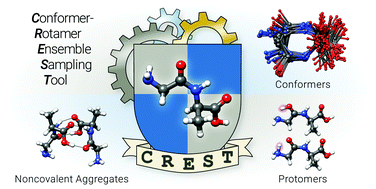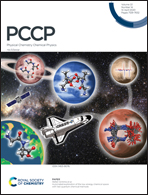Automated exploration of the low-energy chemical space with fast quantum chemical methods
Abstract
We propose and discuss an efficient scheme for the in silico sampling for parts of the molecular chemical space by semiempirical tight-binding methods combined with a meta-dynamics driven search algorithm. The focus of this work is set on the generation of proper thermodynamic ensembles at a quantum chemical level for conformers, but similar procedures for protonation states, tautomerism and non-covalent complex geometries are also discussed. The conformational ensembles consisting of all significantly populated minimum energy structures normally form the basis of further, mostly DFT computational work, such as the calculation of spectra or macroscopic properties. By using basic quantum chemical methods, electronic effects or possible bond breaking/formation are accounted for and a very reasonable initial energetic ranking of the candidate structures is obtained. Due to the huge computational speedup gained by the fast low-cost quantum chemical methods, overall short computation times even for systems with hundreds of atoms (typically drug-sized molecules) are achieved. Furthermore, specialized applications, such as sampling with implicit solvation models or constrained conformational sampling for transition-states, metal-, surface-, or noncovalently bound complexes are discussed, opening many possible applications in modern computational chemistry and drug discovery. The procedures have been implemented in a freely available computer code called CREST, that makes use of the fast and reliable GFNn-xTB methods.

- This article is part of the themed collection: 2020 PCCP HOT Articles


 Please wait while we load your content...
Please wait while we load your content...